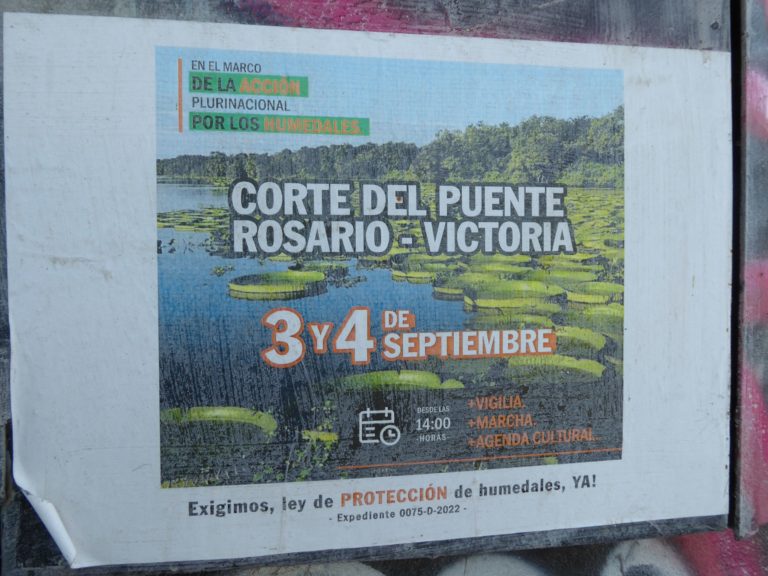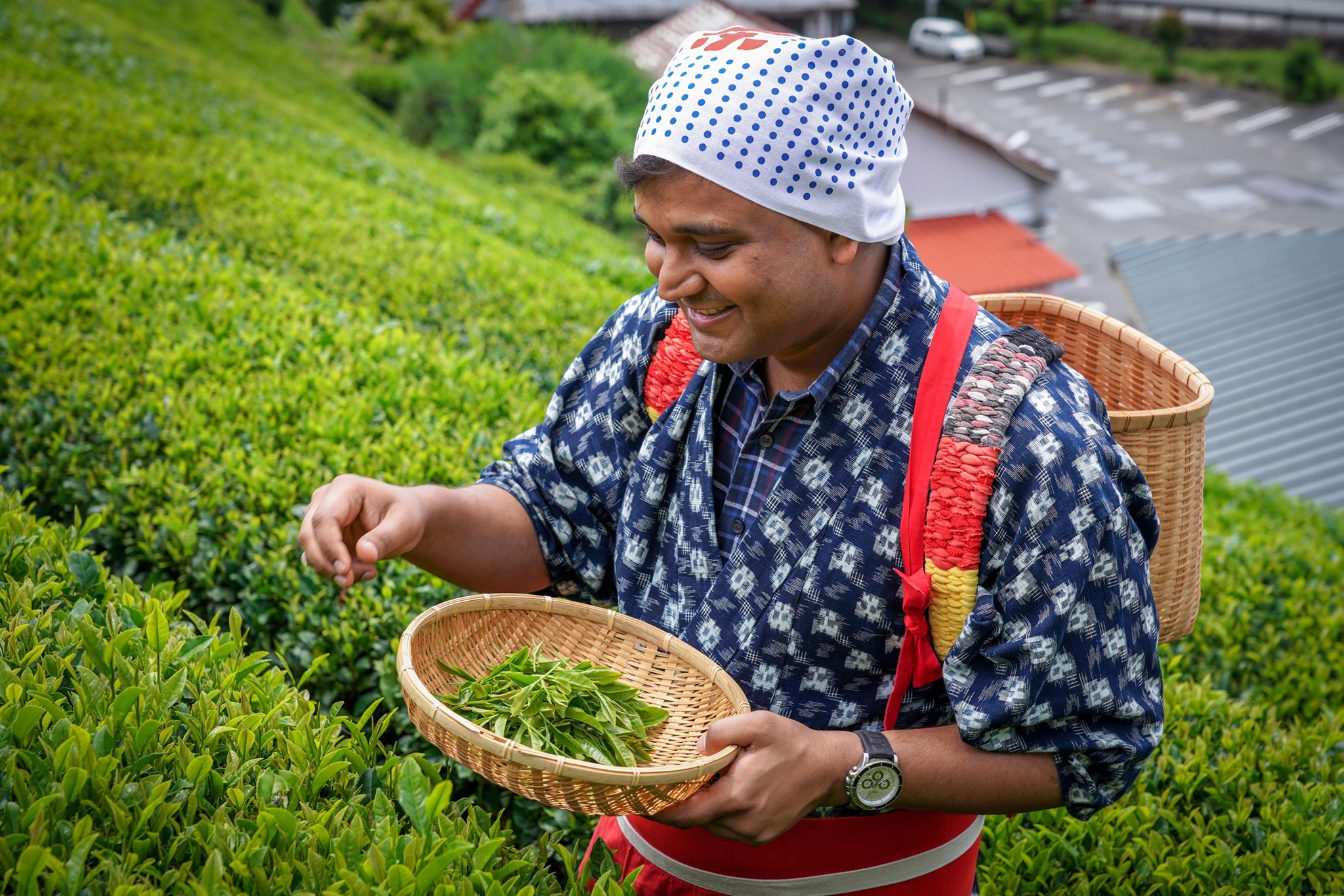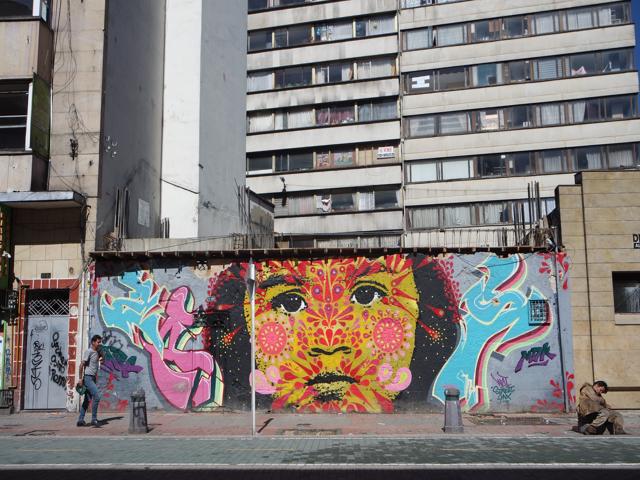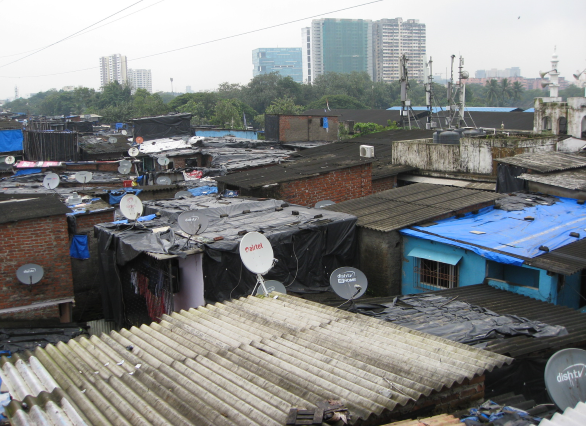Cricket rearing is not an easy exercise. ProciNut organized training sessions in Myanmar
ProciNut researcher Sarah Nischalke reported in her last research and travel blog posts about the culture of eating and producing insects in Myanmar and Thailand. She observed that whereas in Thailand edible insects are a large-scale industry, in Myanmar its potential has to be exploited fully yet (read also here). In this blog, ProciNut member Jochen Dürr tells about the project’s follow-up efforts to introduce insect production in Myanmar.
Awareness raising about cricket rearing among Myanmar’s farmers
On June 13, 2019 The ProciNut project started its first cricket rearing training in Myanmar, i.e. in Wantaung village nearby Kengtung, the capital of Eastern Shan State. Prior to the training, farmers had participated in a trip organized by Welthungerhilfe and GIZ to visit cricket farms in Thailand. As reported before in our blog, the cricket rearing industry in Thailand is very advanced, with more than 20,000 cricket farms. After the trip to Thailand the farmers from Myanmar showed strong interest in cricket rearing.
But, they were reluctant to start without proper instructions, continuous advice and monitoring. This is where ProciNut stepped in by offering assistance to provide a two-day training course. The first training day provided the basics of cricket farming. On the second day, the rearing conditions in the farmers’ homes were discussed. The training was conducted by Dr. Chama Pankaew, Assistant Professor at the Department of Entomology at the Faculty of Agriculture of Kasetsart University in Bangkok, Thailand.
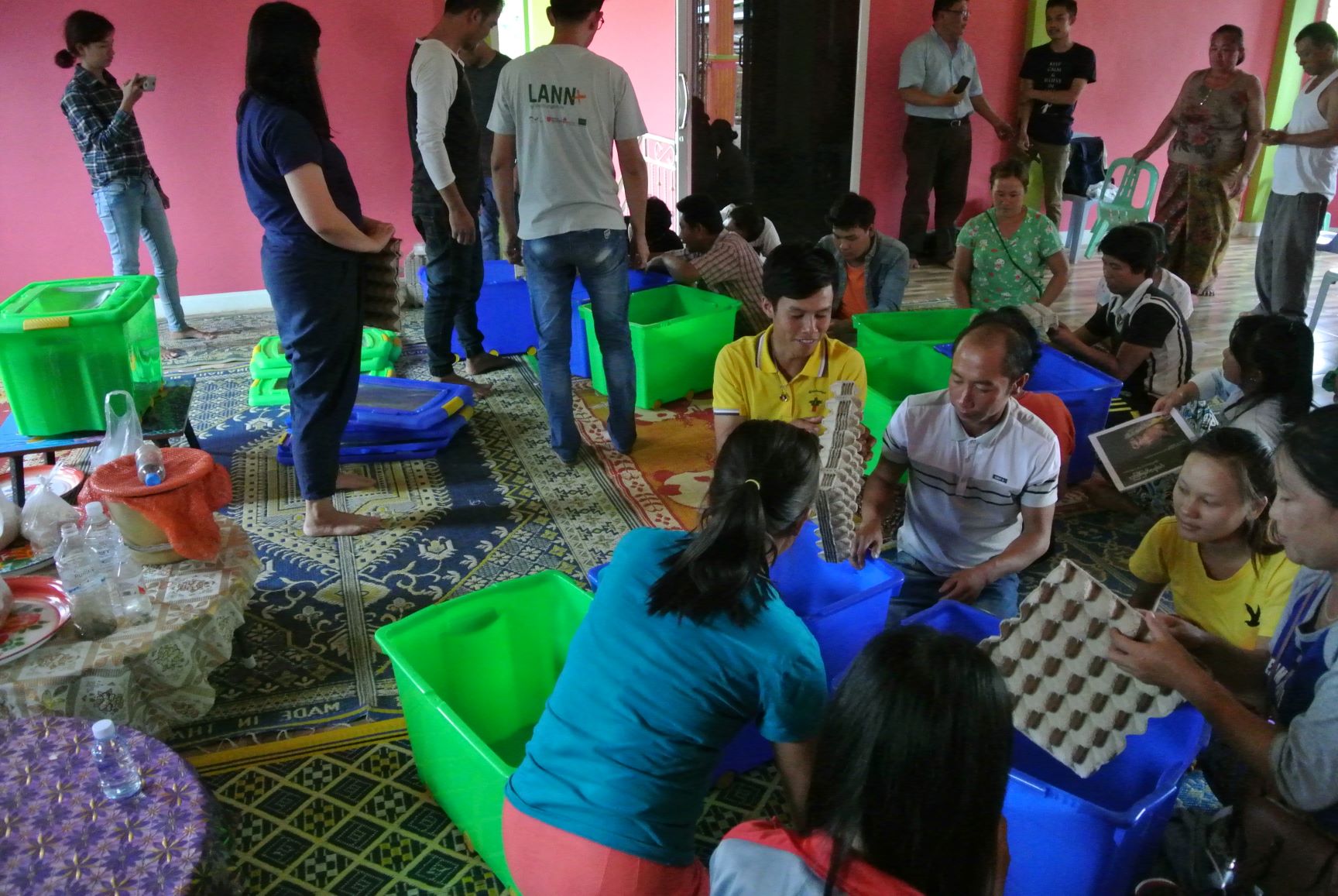
The two-day training in detail
Farmers from three villages were present. In total, 15 women and 9 men, from age 16 to 60 and above, participated. Also, two MSc students from the Zoology Department of Kengtung University in Myanmar attended the training. The presentation given by Dr. Chama focused on the differences of the three main locally present cricket species (ground, two-spotted, and house cricket), and on how to differentiate between male and female crickets. Dr. Chama also talked about the life cycles of different cricket species, the materials needed for rearing, and the basics of the rearing process.
A hands-on exercise was offered: Ten plastic boxes were prepared with egg cartons (brought from Bangkok because they are not locally available) for rearing, filled with feed (chicken feed mixed with rice brand), a water basin with stones, and the substrate for laying eggs (rice waste mixed with other materials). Villagers had collected about 50 – 100 crickets (giant, ground, two-spotted, and house crickets), which were then separated and put in the boxes. On the next day, the homes of the farmers were visited to see under which conditions they stored the boxes.
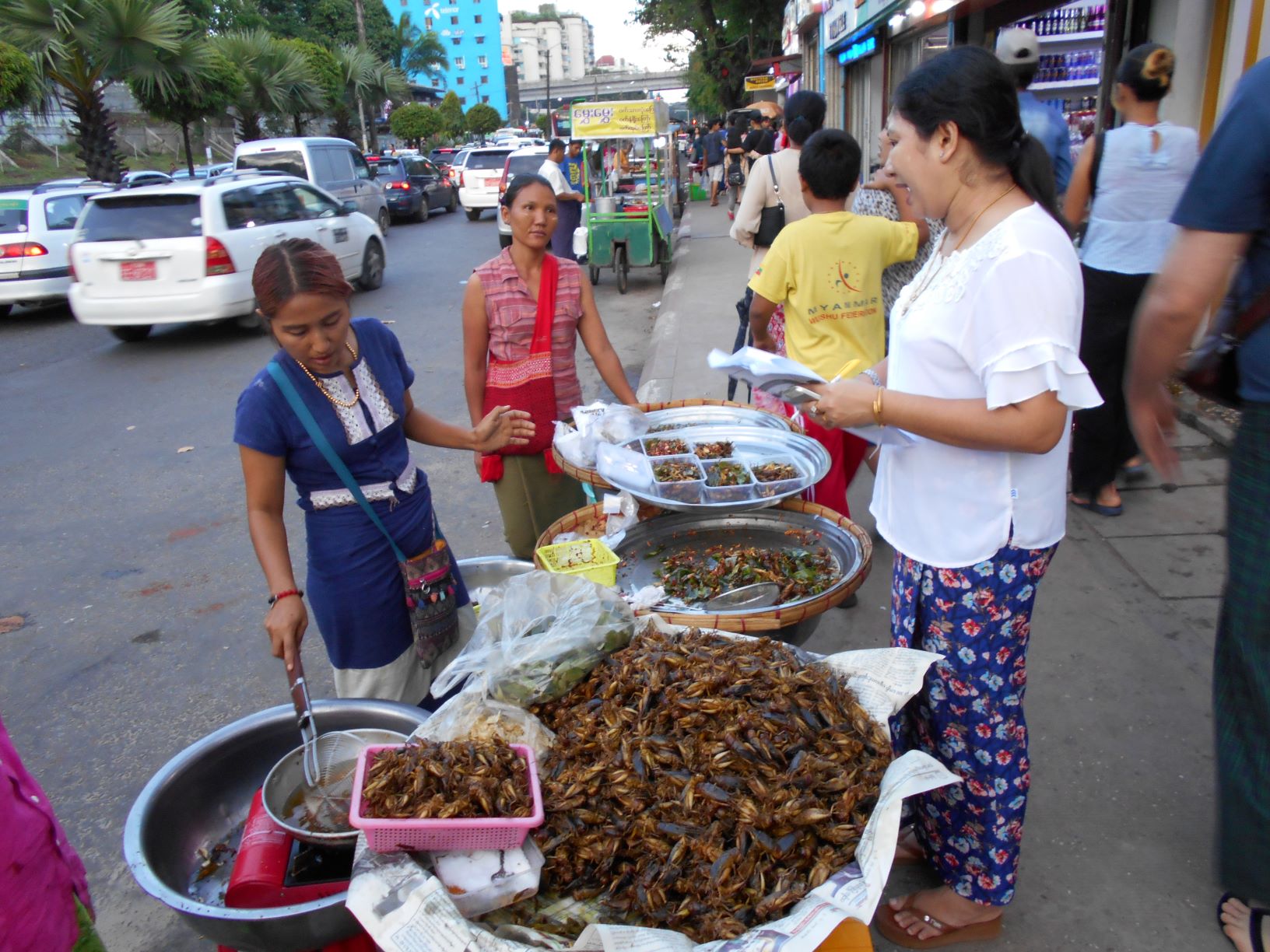
In between: language issues tackled
People enjoyed the interactive training. Dr. Charma was supported by the future ProciNut field assistant, who will be responsible for providing help to the farmers and monitoring the trials. He speaks the local Shan language, but is also fluent in Thai and Burmese. This will prove to be an important asset in a region, where different languages are spoken, sometimes within the very same village. Already during the training, all of the three languages had to be used.
Of utmost importance: value chain analysis
Conducting a value chain analysis of insects is important in order to gain knowledge about supply and demand dynamics, characteristics of actors involved in the chains, and the general production, processing, marketing and consumption conditions. Dr. Jochen Dürr from ZEF at the University of Bonn and Thu Thu Myint from the Agricultural Department in Myanmar conducted interviews by means of a structured questionnaire. They visited different market places in the former Burmese capital of Yangon and the research area in Eastern Shan State to carry out these interviews.
First market observations
Street sellers in Yangon offer mainly giant crickets, either fried on the spot with garlic, chili and leafs, or pre-fried. Serving “fresh” crickets enhances consumers’ confidence in the product and improves the taste. Crickets are sold in plastic boxes of two sizes (20-25 and 35-40 crickets each), achieving high prizes of 3,000 and 5,000 MMK respectively (1.80 and 3.00 Euros). Vendors order the crickets they sell from traders in Mandalay in large quantities. The delivery takes place in big crates. Ice is added to preserve the crickets during the transportation from Mandalay.
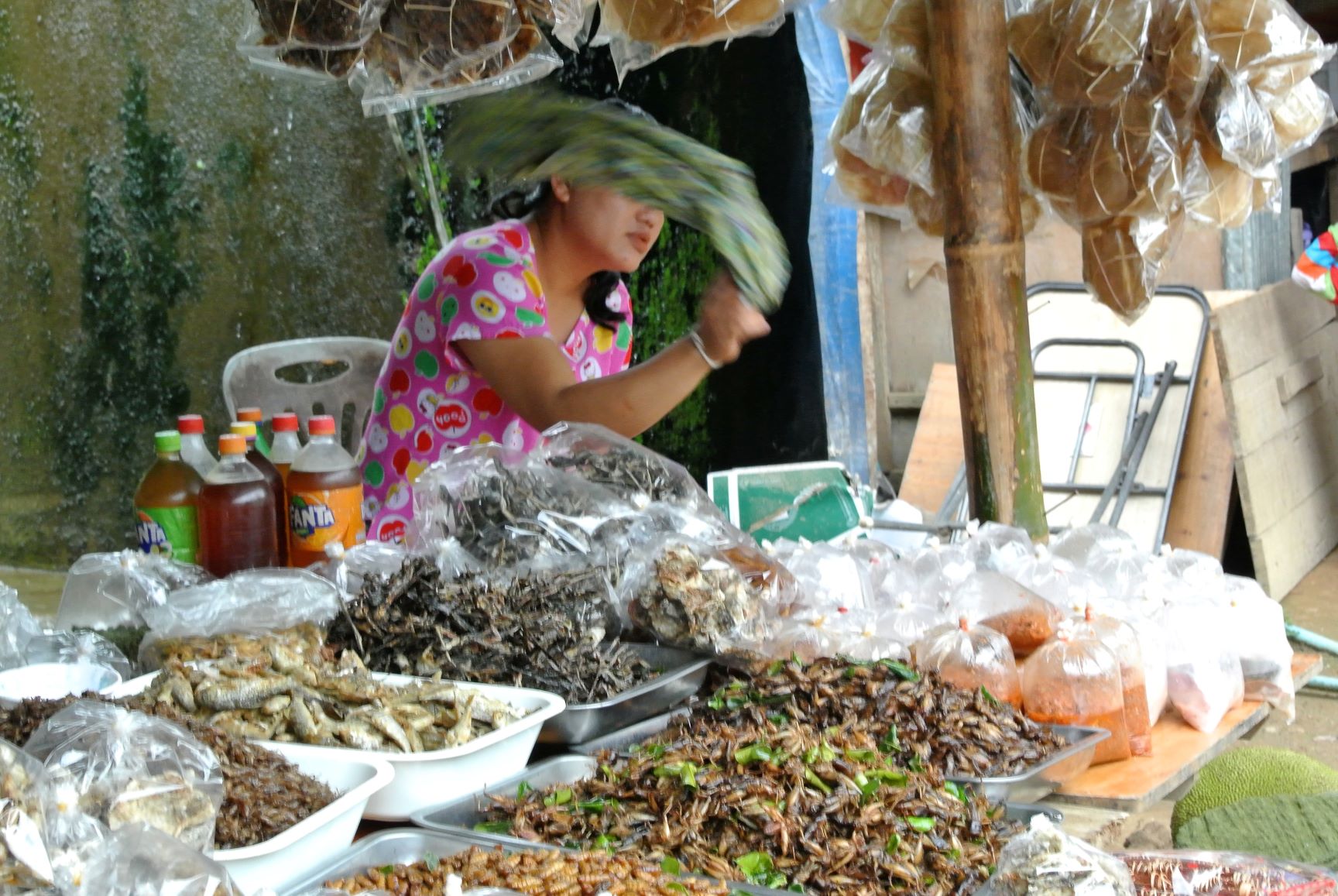
Ideas for expansion
It seems that markets in Eastern Shan State have evolved only recently, after the area has become more peaceful. All retailers are women, who started selling insects only two to three years ago. The main insects sold are bamboo worms, silkworms, and crickets. In addition, collectors of nearby villages bring giant crickets and bamboo worms seasonally. Silkworms, house crickets and ground crickets are imported from farms in Thailand. But retailers showed interest in buying locally produced crickets too, on condition that a sufficient and constant supply would be guaranteed. Therefore, the Eastern Shan State would be an interesting market for cricket rearing within the ProciNut project. Further research, for example on connections between different insect markets, price formation processes, or consumer preferences, are necessary to gain a comprehensive idea of this, so far, mostly under-researched topic.


